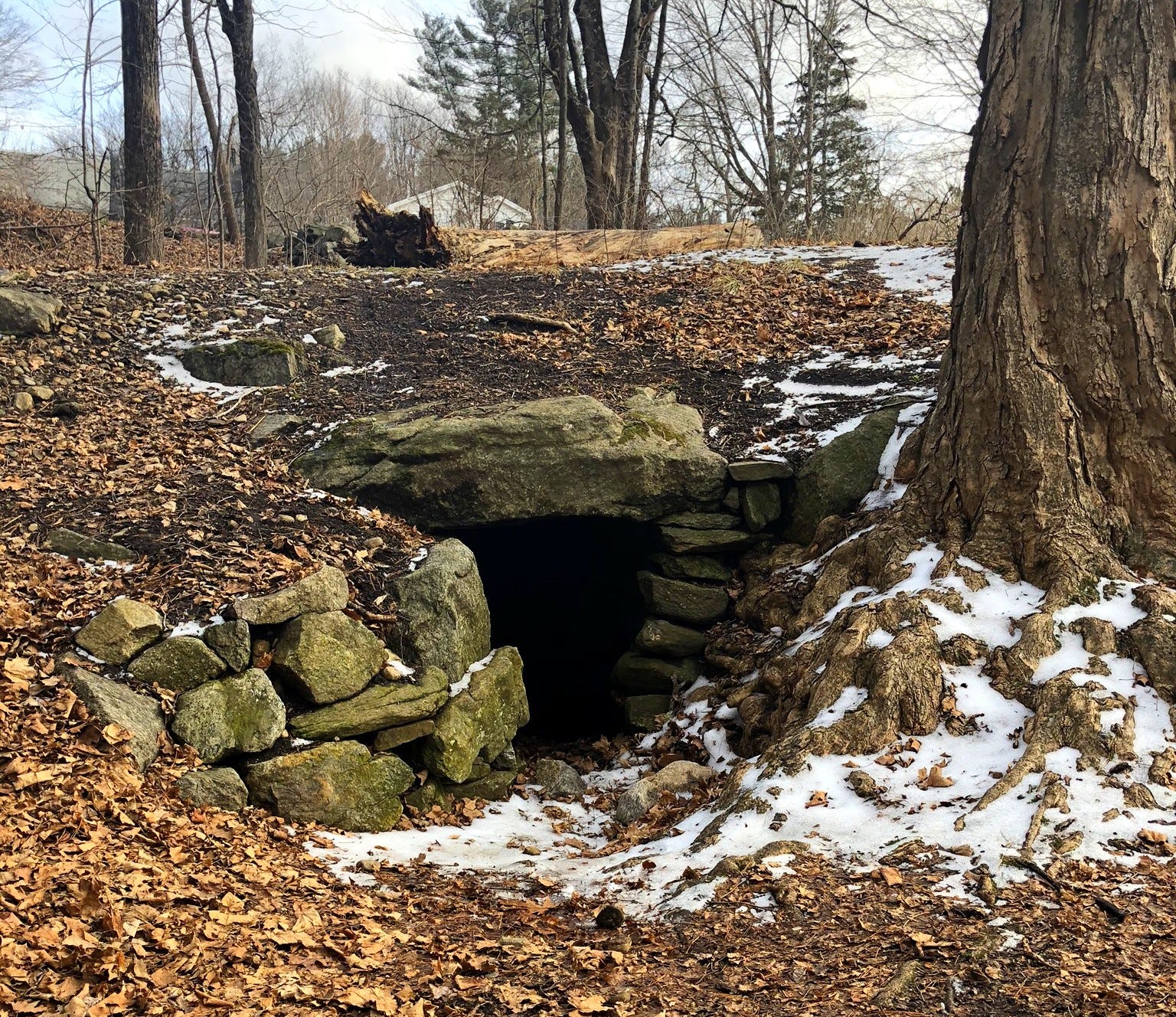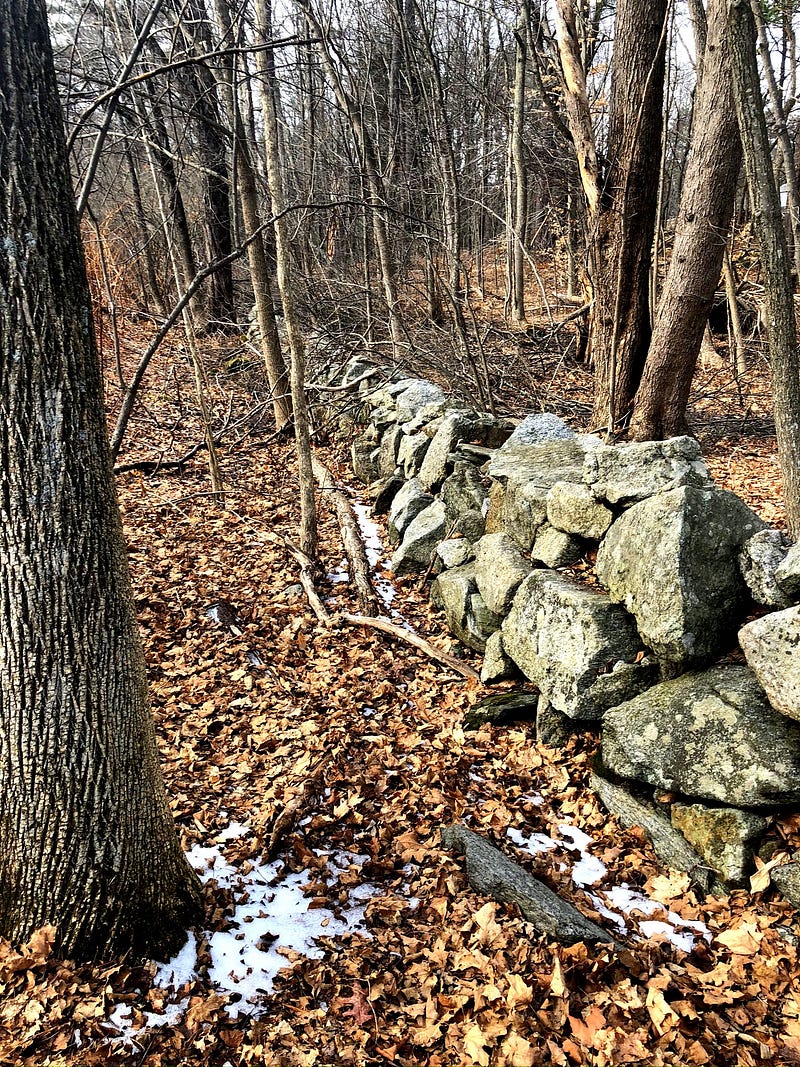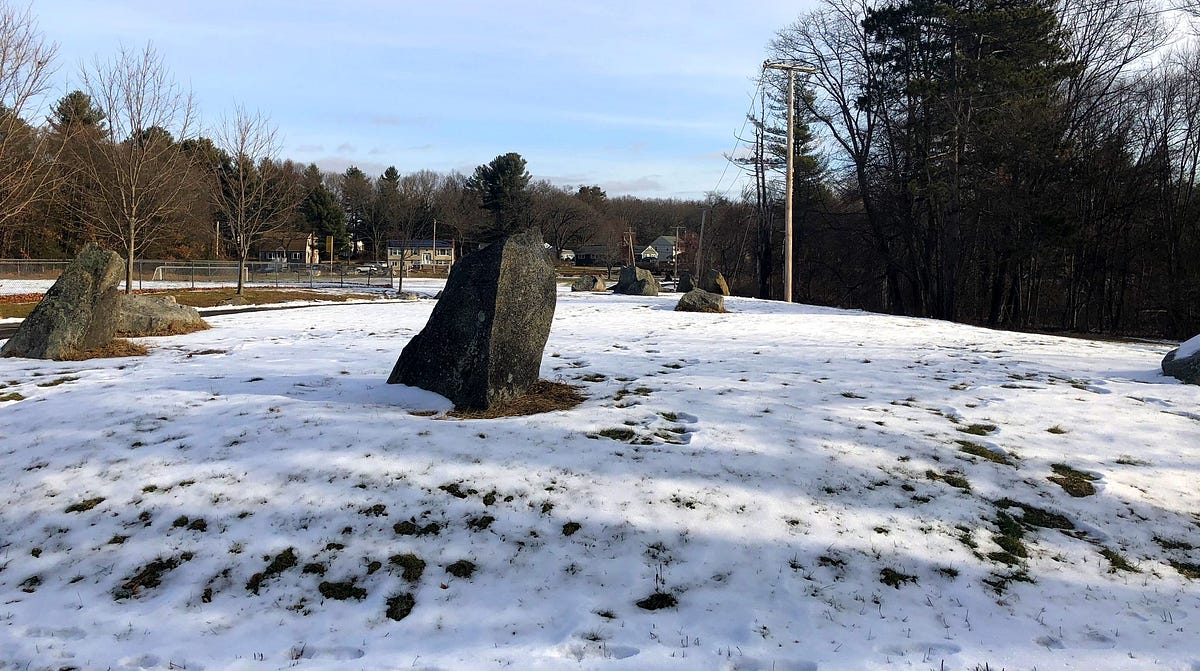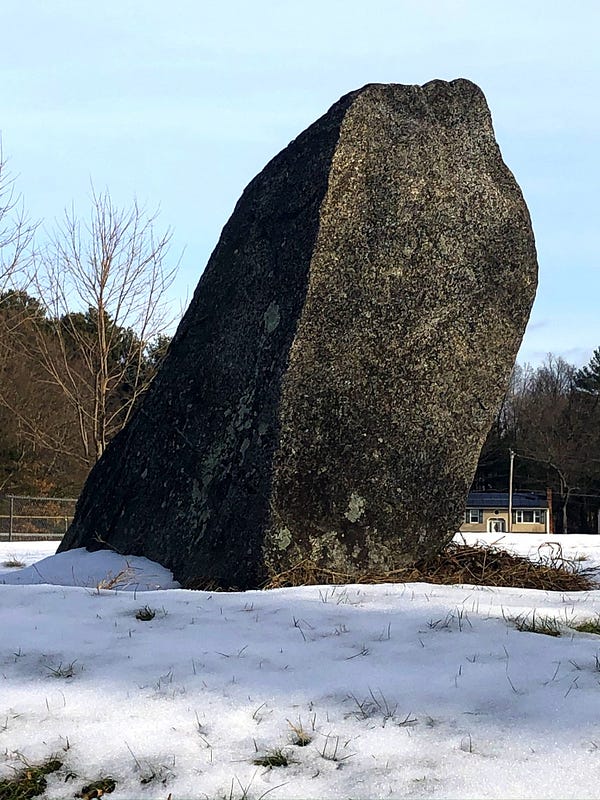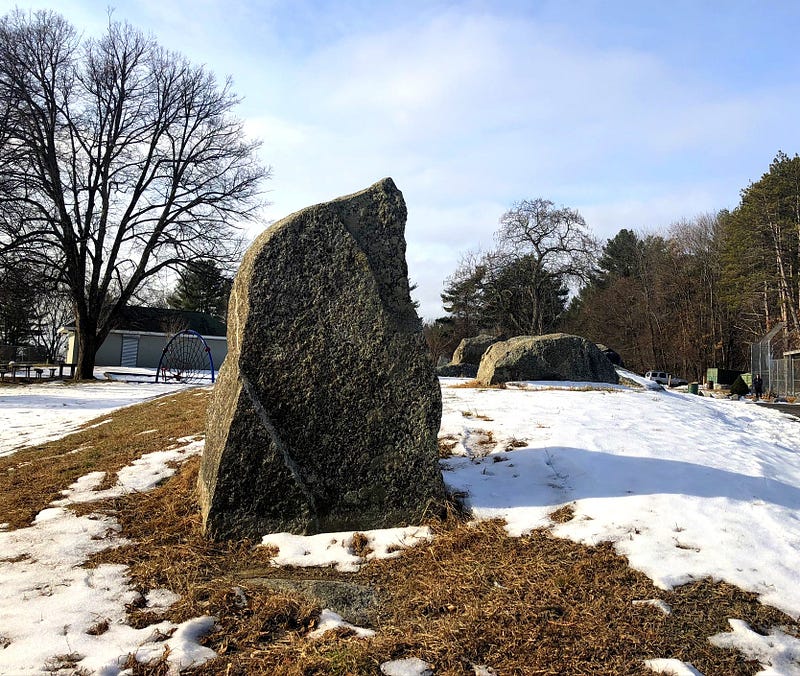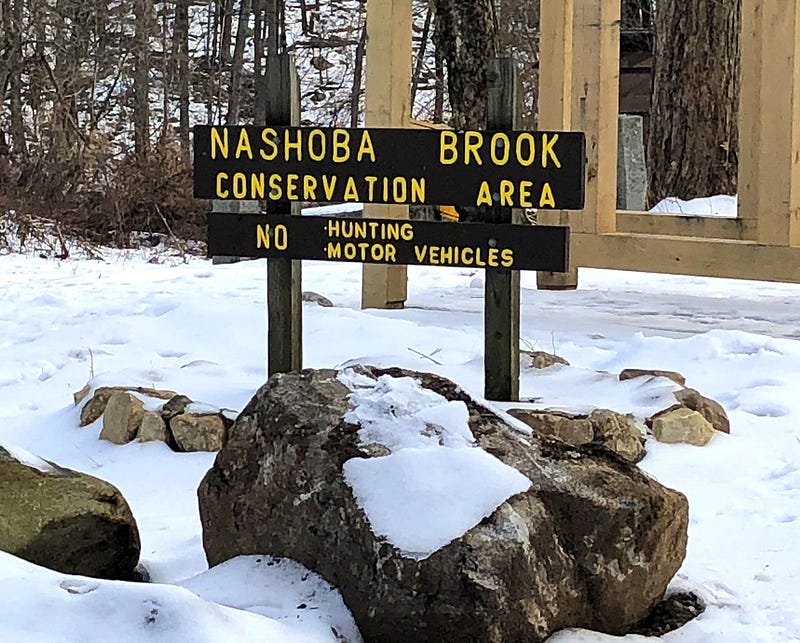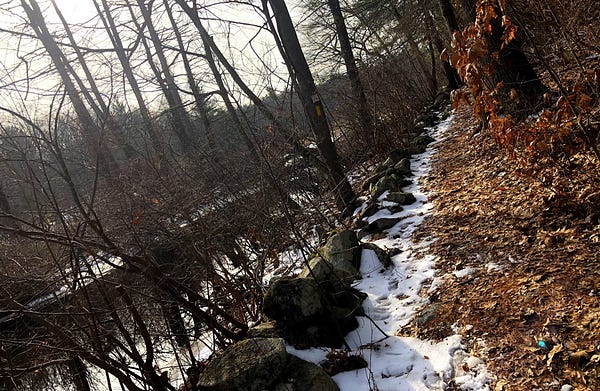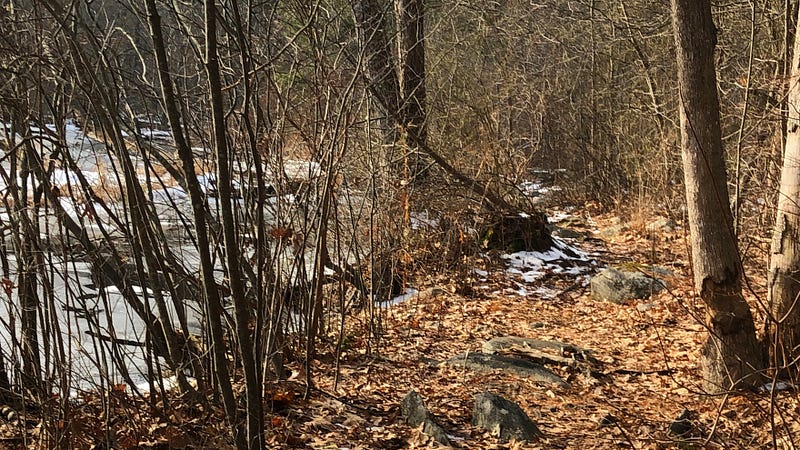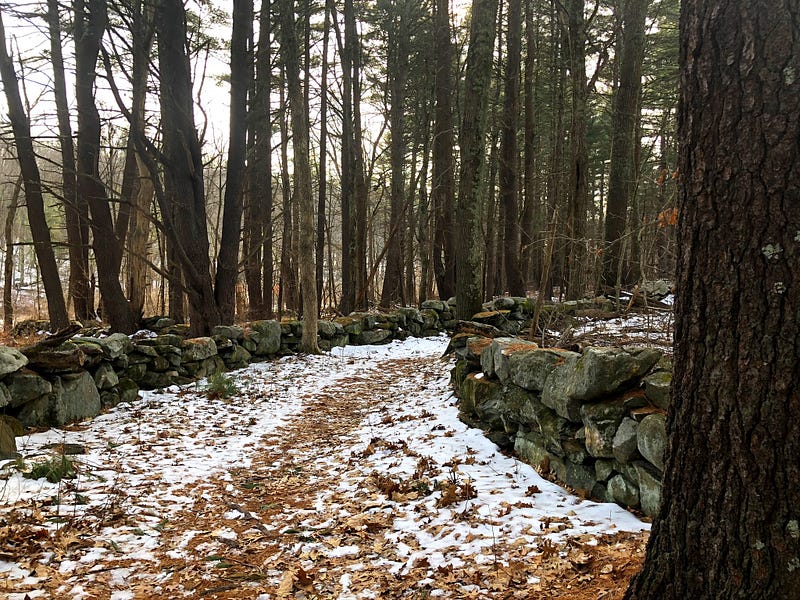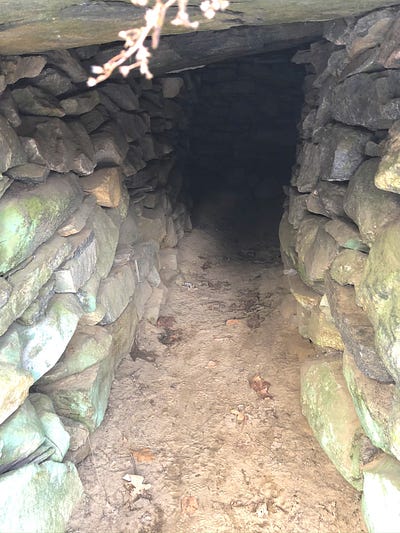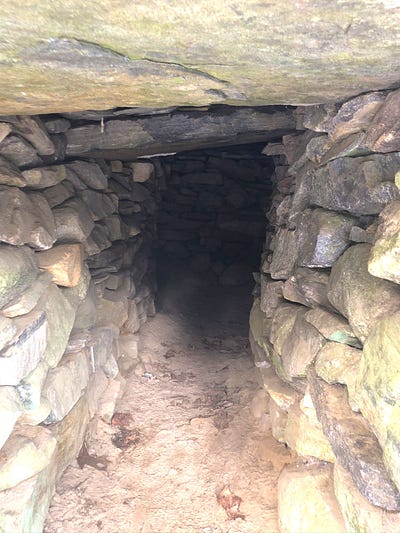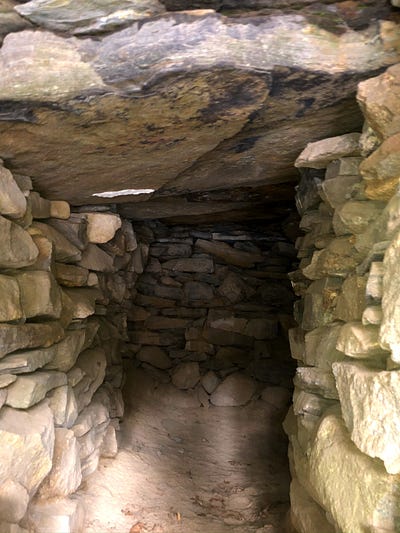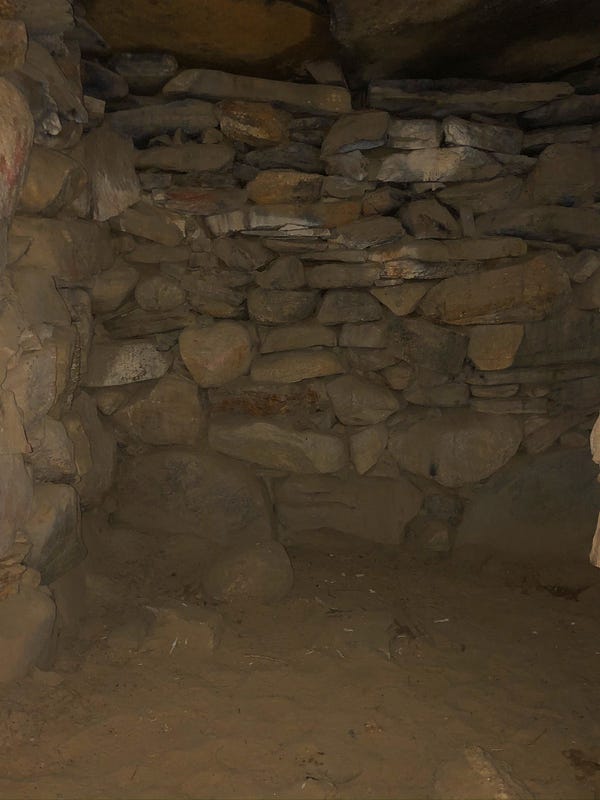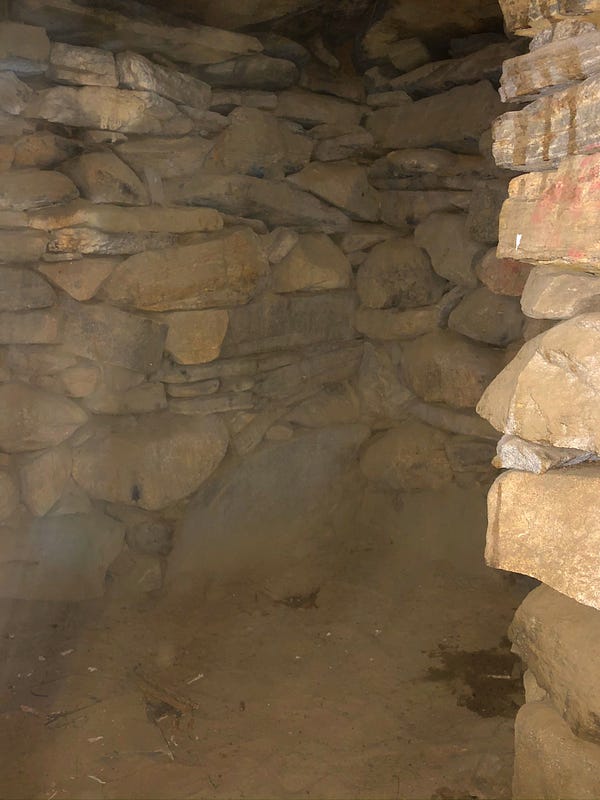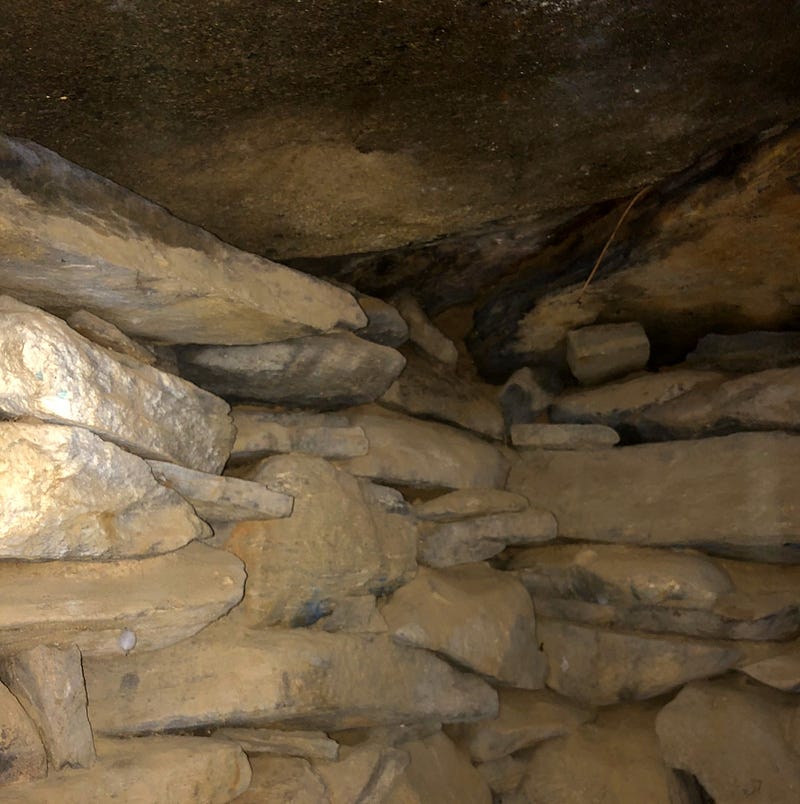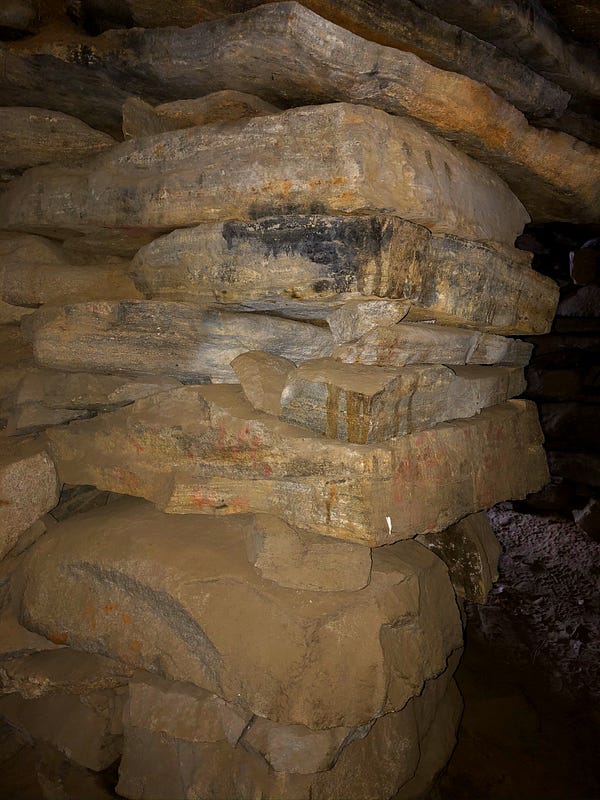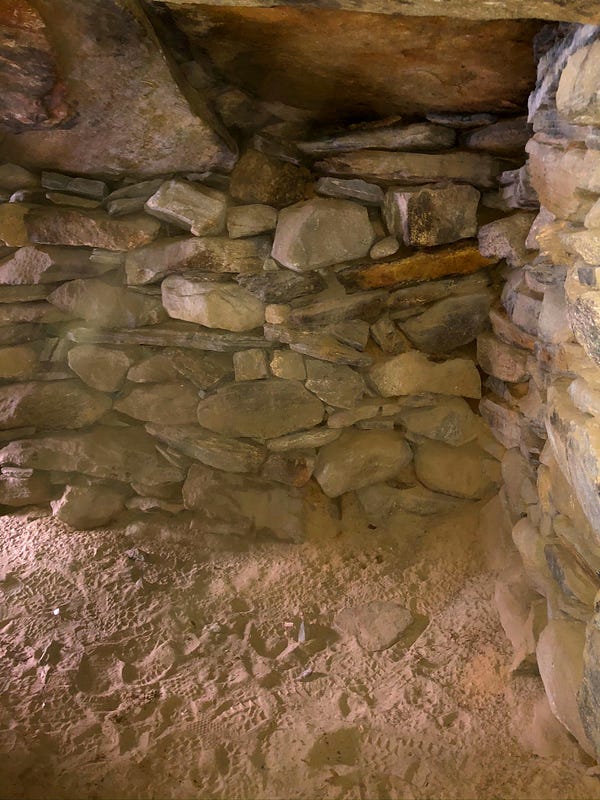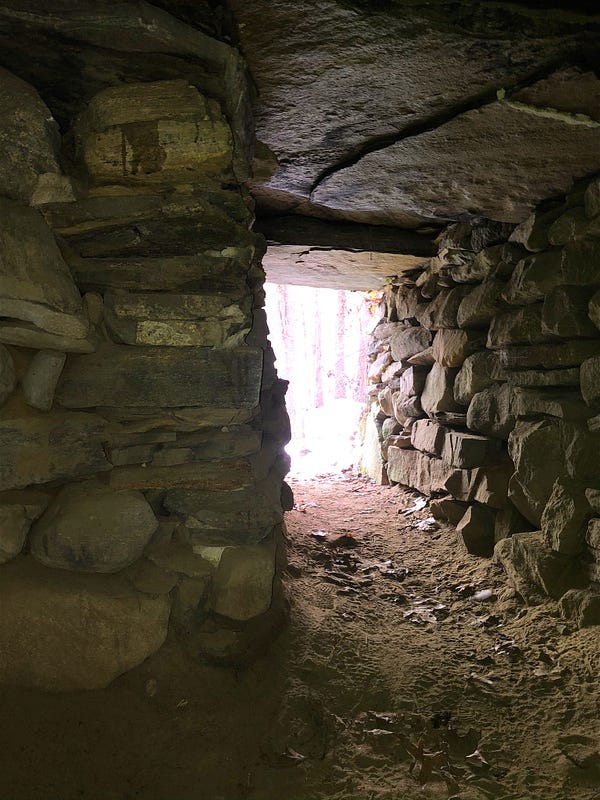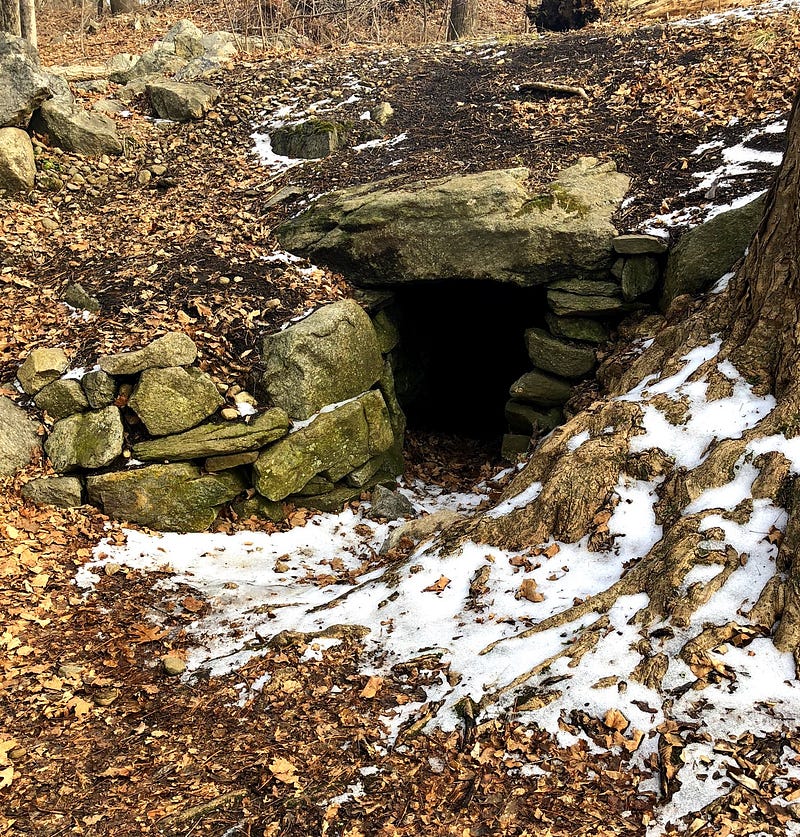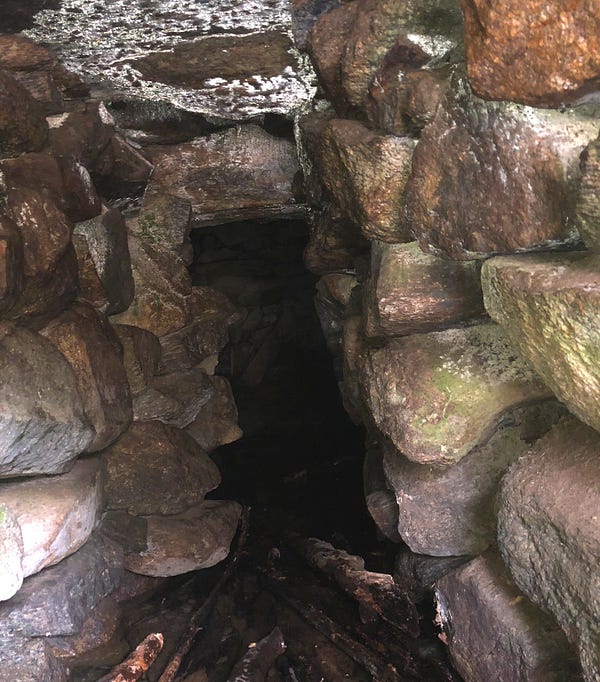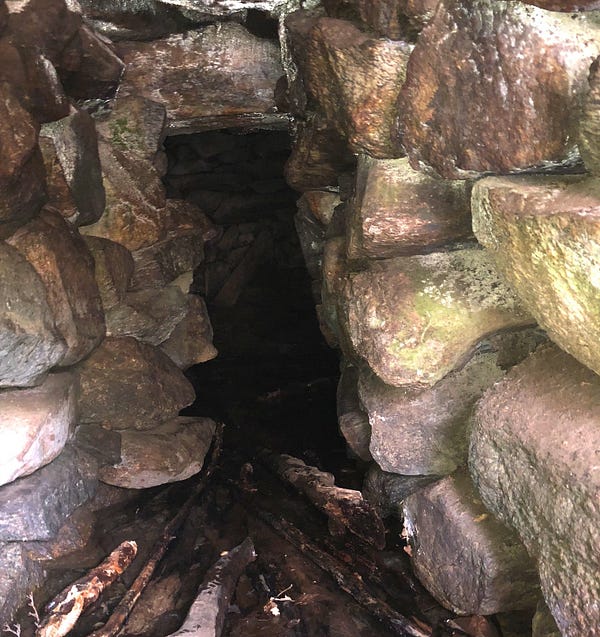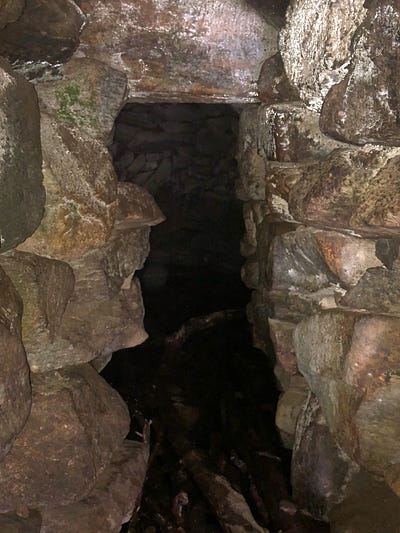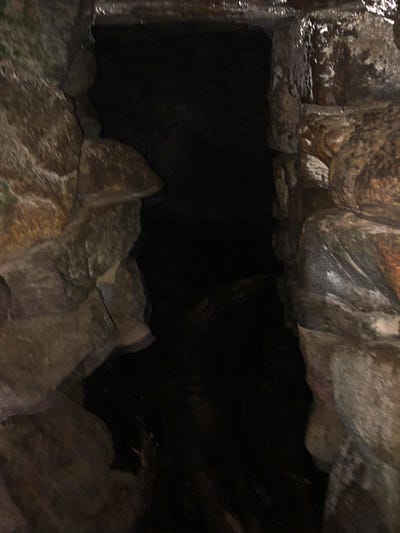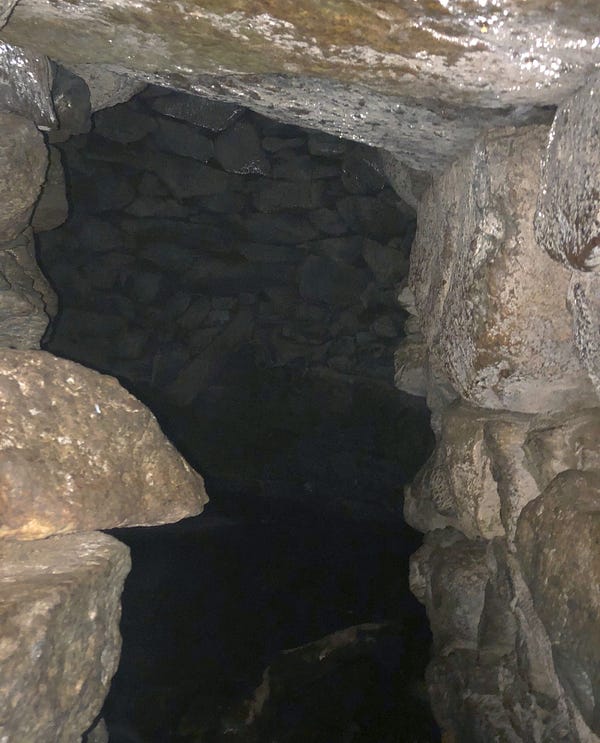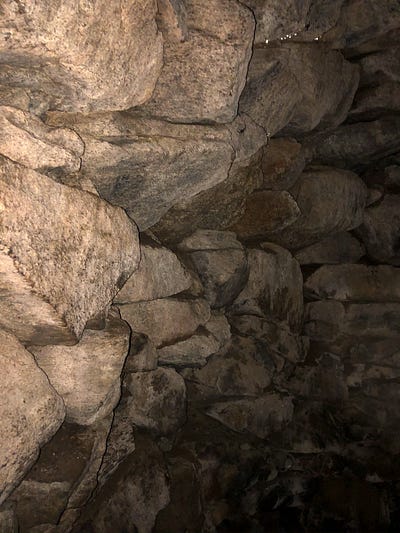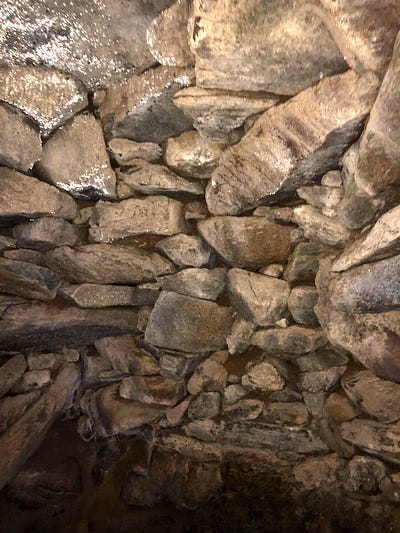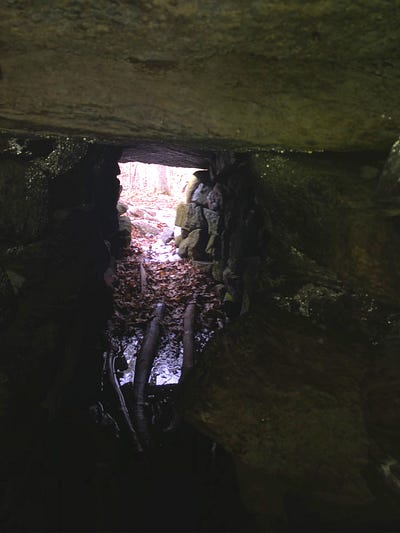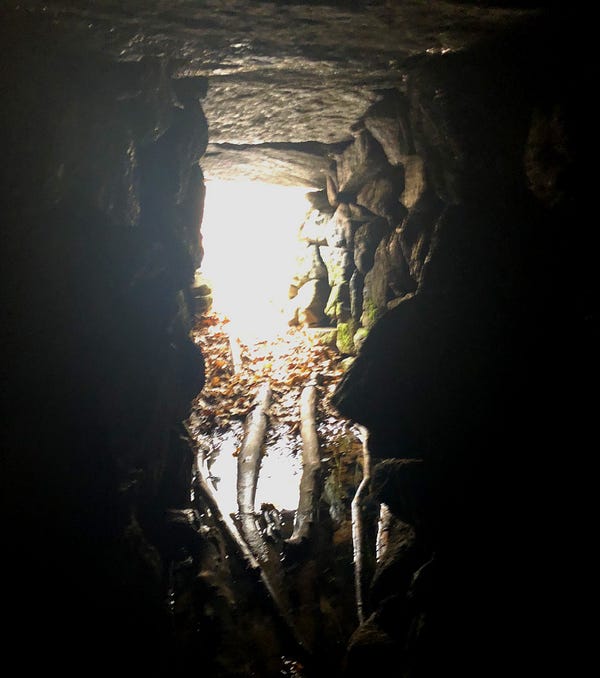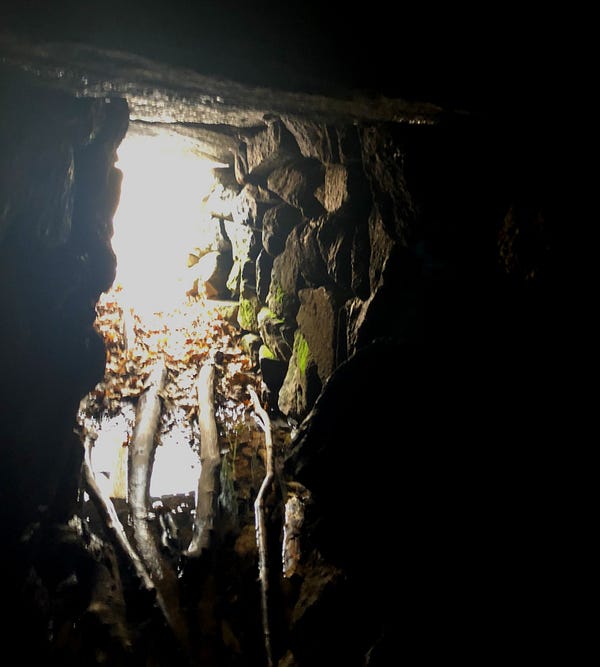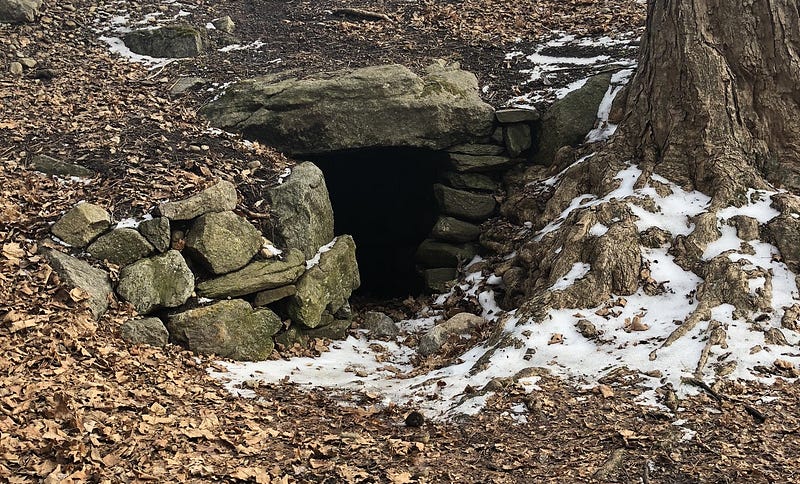Exploring Three Stone Workings in Massachusetts
A Stone Circle and Two Stone Chambers in Words and Pictures
A Stone Circle and Two Stone Chambers in Words and Pictures
There are mysterious stone works throughout the New England landscape, whether of Colonial, Native American, or other provenance. Learning of the location of a couple of these in Massachusetts, I took advantage of a recent visit home to see my mom for the holidays to do some “exploring”.
I believe in keeping my mind open to possibilities, and love history and prehistory. Archaeology and anthropology fascinate me, from the mainstream to what the mainstream call fringe & pseudo. Respectfully, I disagree with those terms. I have no problem asking “What If?” In the past, mainstream archaeology has been dogmatically off the mark itself — see “Clovis First” for one recent example.
Keeping my mind open means I don’t blindly accept anyone’s certitude. I want to hear from a few different points of view, and make my own evaluation from there. Better still to see things for myself.
Druid Hill in Lowell, Massachusetts features what is said to be a Stone Circle — in between a school and a baseball field. There are some small plinths here, but it requires some imagination to make it a Stone Circle.
Taking shots of the stones from low angles makes them look more impressive than they do in person, where none of the stones rise above my waist.
Heading south down Routes Four and Twenty-seven to Acton, Massachusetts, we find the first of two Stone Chambers we’ll explore.
The Acton Stone Chamber is in the Nashoba Brook Conservation Area, about a mile walk in along a beautiful trail winding along the Nashoba Brook.
There are Colonial foundations and extensive stone walls.
And the Chamber.
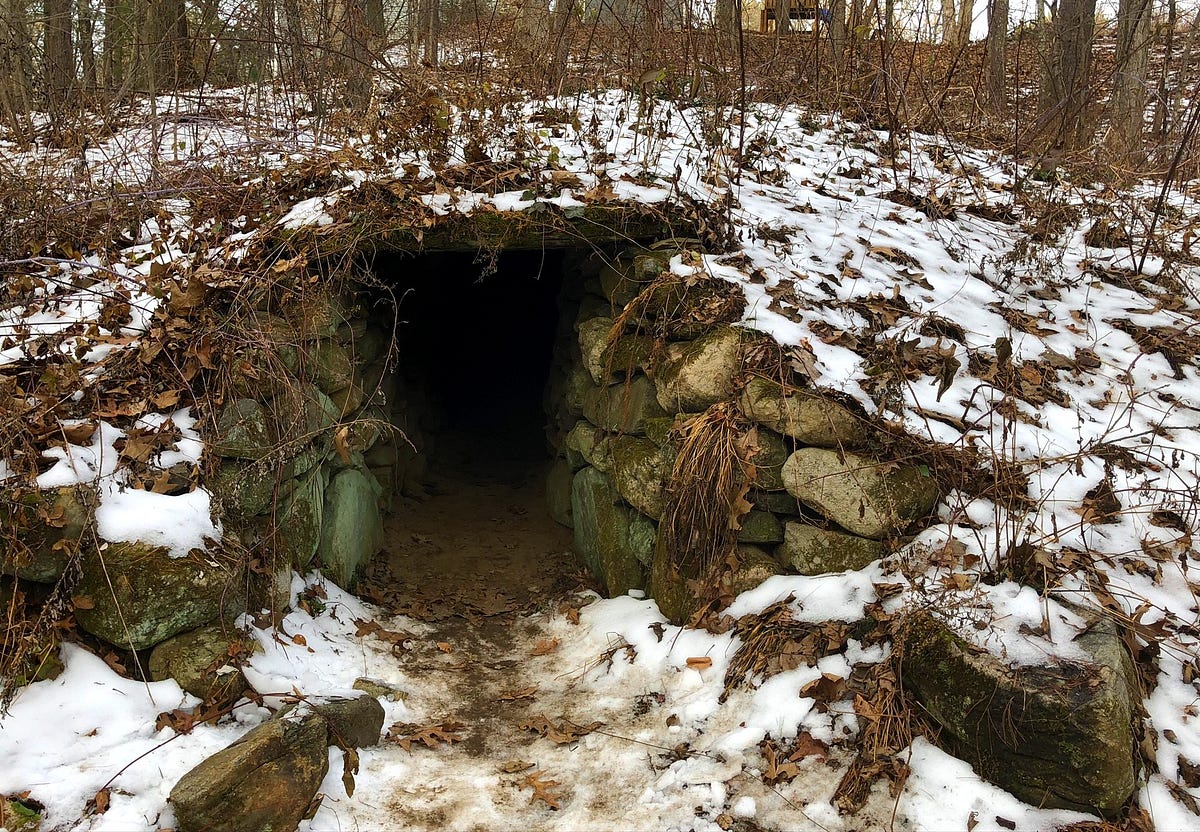
Inside, the Stone Chamber is L-Shaped.
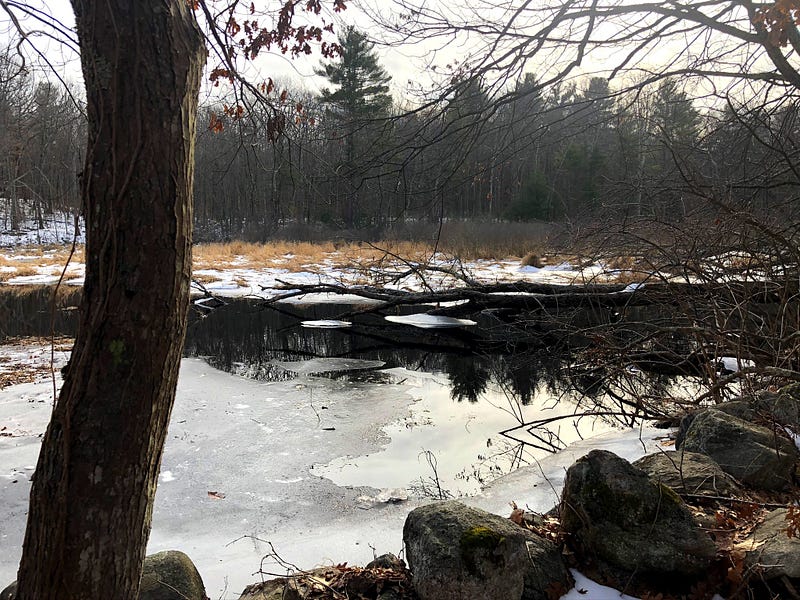
The Chamber sits near the banks where the brook expands into a pond, and the Chamber was used in Colonial times as an ice house. It has been stabilized and reconstructed by archaeologists to make it safe for the public to visit. Most of the material goods found here reflect the eighteenth and nineteenth century uses of the Chamber, creating a veil of history impossible to see past, as it obscures any earlier pre-Colonial provenance for the site. An informational sign posted at the site describes its known history and reconstruction efforts.
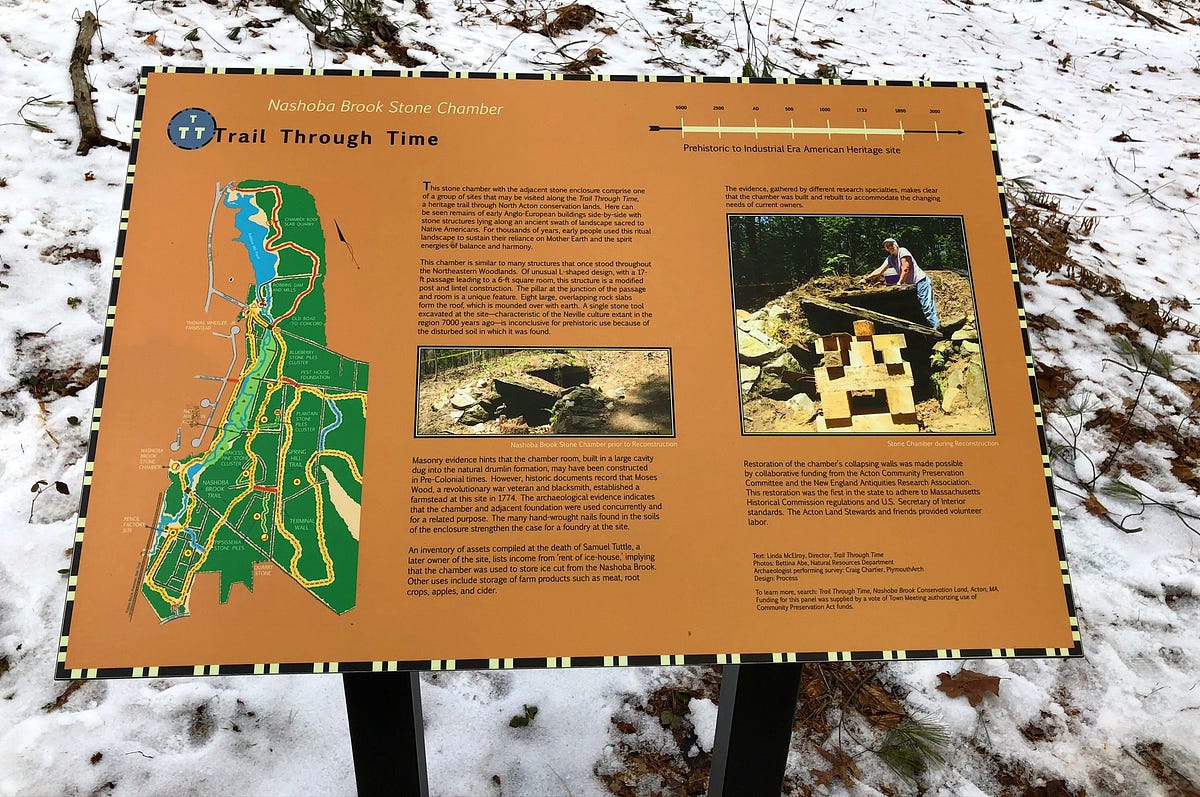
A few miles south of the Acton Chamber, a bit of a drive down Routes Two and Four-Ninety-Five, we find a very cool “Beehive” or Domed Chamber in Upton, Massachusetts, in the Upton Heritage Park. The town bought the land to preserve the Chamber — the one who’s picture opens this article.
The Upton Stone Chamber, flooded by snow melt, is a little more challenging to visit in Winter.
What appears to be a face in the rocks appears on the left-hand side of the narrow passage into the Chamber.
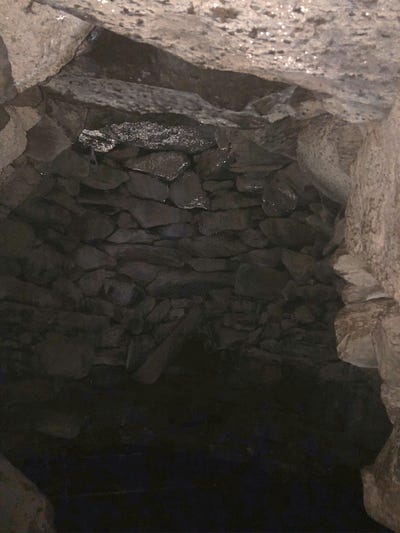
The passage ends and the Chamber opens up into a domed space.
It’s said this Chamber is oriented to the Summer Solstice Sunrise, as it ascends over ancient stone altars found on a nearby ridgeline.
It feels like a different sort of space — very different from the Acton Stone Chamber. The passage is long — it’s nearly pitch-black inside the Chamber, even at mid-day.
Unfortunately, the flooding prevents us from standing in the middle of the chamber directly under the dome, but there are rocks along the edges of the Chamber and some added dead saplings to stand upon sticking up out of the water.
Colonial? Native American? Ancient visitors from Somewhere Else?
Archaeologists state that these places are Colonial, given the material culture found at these sites thus far — though in my guidebook for this adventure, the new travel guide Archaeological Oddities by Kenneth L. Feder (Rowman & Littlefield 2019, p. 97), Feder, professor of anthropology at Central Connecticut State University, does admit that thermoluminescence dating of soils found beneath the rocks of the Upton Chamber give an indication they were placed there more than Five Hundred years ago.
The book was a Christmas gift from my Mom — I owe her great thanks for launching me on this post-holiday exploration. My thanks to Professor Feder and his guide book, too. And also? To the dog-walking Paul — whose last name I did not catch— a resident of the Upton neighborhood where the Chamber lies. He said hello and volunteered to show me where to find the “cave”, as he called it, within the Upton Heritage Park.
Want to see more? There’s a seven-and-a-half minute video with these pictures, additional shots, and some live footage of my explorations, On My YouTube Channel.
Mike Luoma is a science fiction author, comic book creator, journalist, podcaster and radio host (WBKM.org) from Vermont — find out more about his work at http://glowinthedarkradio.com.


